How to Create Ishikawa Fishbone Diagram in Excel
The Ishikawa diagram, popularly known as the fishbone diagram or the cause and effect diagram, is mainly used in quality management. It is used to analyze inefficiencies of processes. Thanks to the fishbone diagram, we have the opportunity to analyze the problem that is visible in the process.
The Ishikawa Diagram is a tool that will detailly identify the root causes of this problem. In other words, an ishikawa diagram can help identify defects in processes by analyzing the root causes of the problem.
Ishikawa Diagram structure
Fishbone diagram consists of three parts:
- The first is the “fish head” that represents the problem under analysis. This is a problem caused by not meeting expectations or not meeting specifications.
- The next section is the “backbone” that identifies the root causes of the problem.
- On the other hand, “bones” directly pinpoint the causes of the problem.
The defect is noted at the end of the horizontal axis of the diagram. In the next phase, identify the main categories of possible causes of the problem (effect).
The most common cause and effect pattern has five main classification groups:
- Man
- Machine
- Material
- Method
- Management
- Environment
In the diagramming phase, the above categories are modified as needed. Some of them can then be omitted or replaced with others.

You can create ishikawa diagrams easily using Excel. You just have to insert the required shapes, whether arrows, rectangles or circles, and add the description. You can find all the required shapes and textbox (to insert the description) in the Insert –> Shapes menu option.

Create Ishikawa Diagram
Step 1. Open Excel and save your file as ishikawa-diagram.xlsx. Go to Insert (main menu) > Shapes (in the Illustrations group). Select the first arrow in the Block Arrows section (circled in red).
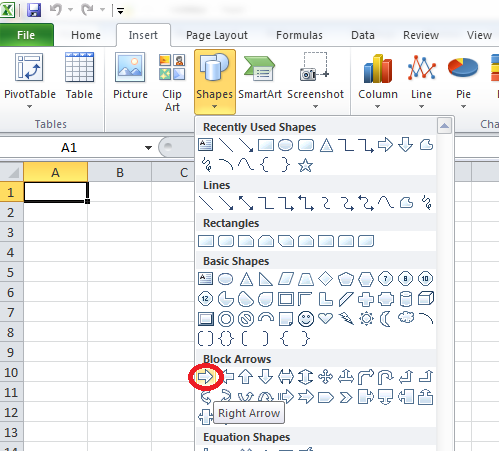
Just drop the arrow anywhere on the Excel worksheet. You can change the size, position, or color of any shape using the Format menu options.
The Format menu option will only be visible when you select a shape to format.
![]()
Once you insert the arrow, your screen will look like this:
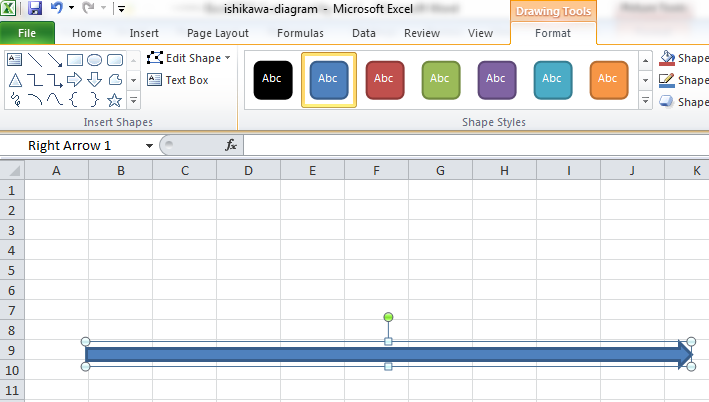
The size, position and color of your arrow could be different. Make sure your “fish backbone” is long enough and has enough space at the top and bottom to accommodate other spines.
Step 2. Go to Insert (main menu) > Shapes (in the Illustrations group). Select the second arrow (single-headed arrow) in the Lines section.
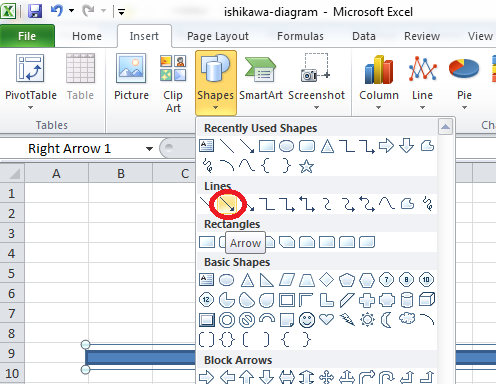
Drop in the arrow anywhere on your Excel worksheet. Then, drag it in such a way that its arrow touches the main arrow we positioned in Step 1.
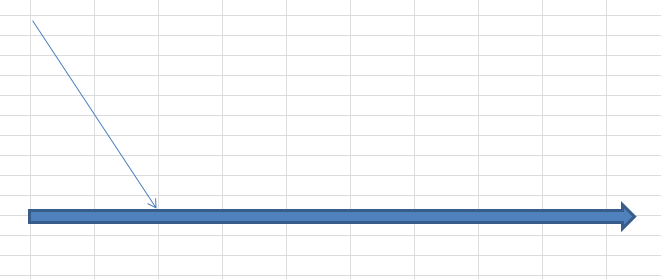
You can make this single headed arrow thicker. Right-click the arrow and click Format Shape option.
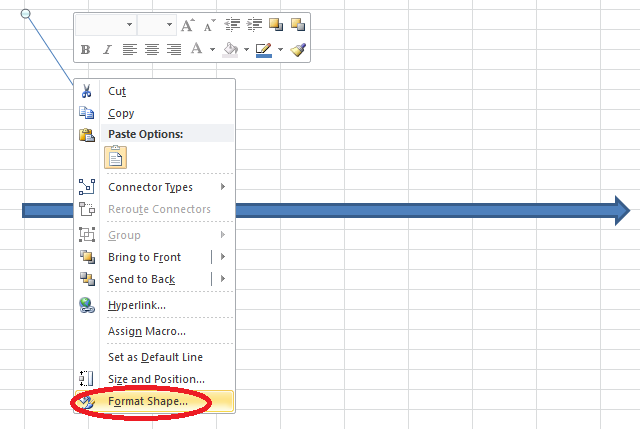
Increase the value of Width from the Line Style window.
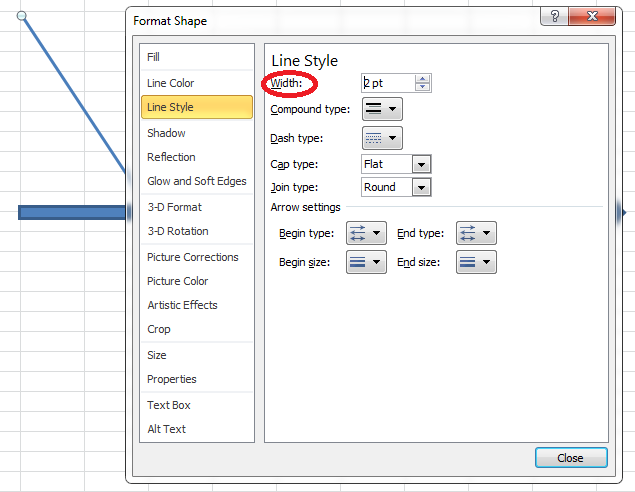
Click the Close button.
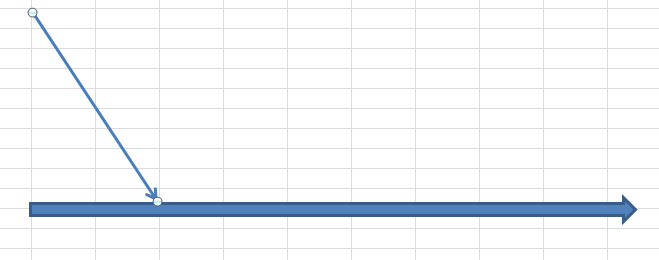
Step 3. To create more single shots at the top of the “fish spine”, right-click the arrow created in the previous step. Copy (CTRL + C) and paste (CTRL + V) as many times as you need the arrow at the top.
Put them in the right positions so that they all meet the main arrow. You can adjust the length of the main arrow if you like.
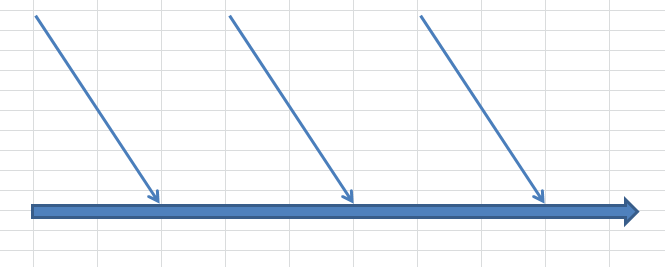
Step 4. Then, to create the arrows (bones of the skeleton), copy one arrow and paste it somewhere on the sheet. Right-click the copied single-headed arrow and select Size and Position.
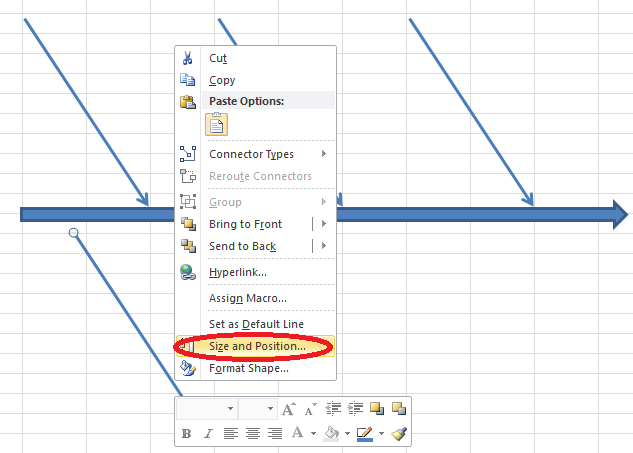
In the Size section, change the Rotation value as required so that the arrow lines up with the main arrow.
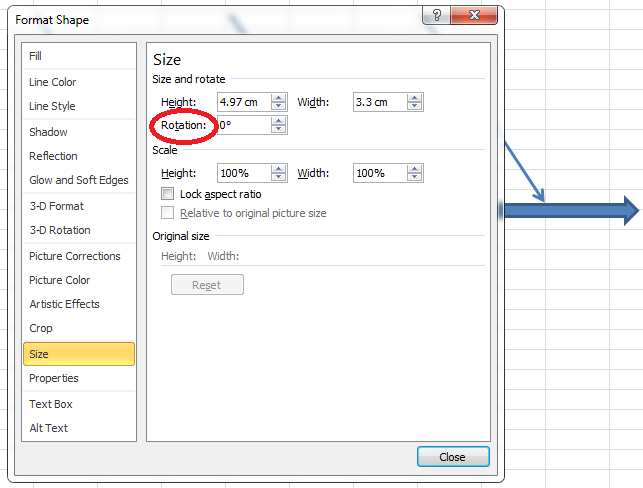
Close the window. Place the arrow in such a way that it just touches the main arrow.
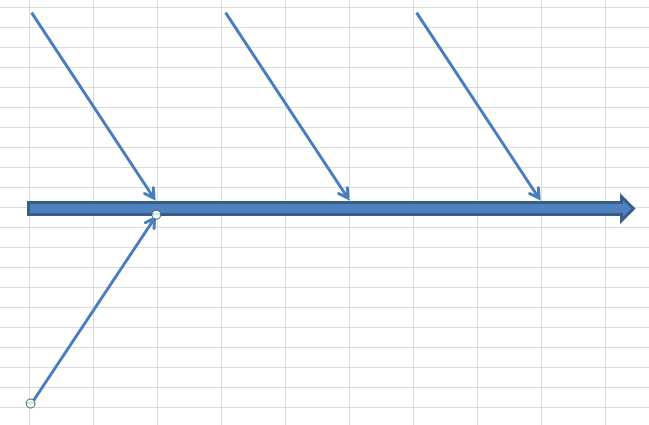
Step 5. To create more single headed arrows at the bottom of the main arrow, repeat step 3.
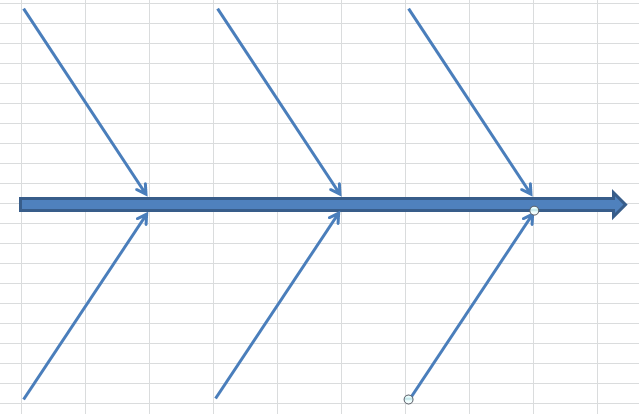
Step 6. To add text descriptions, go to Insert–> Shapes and select Text Box (first object in Basic Shapes section).
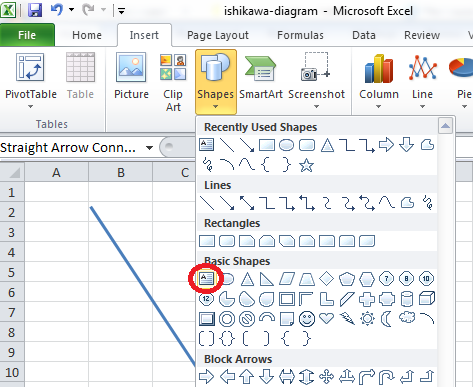
Drop it in the worksheet where you want to insert description. Add the description by just clicking inside the textbox and typing whatever you want.
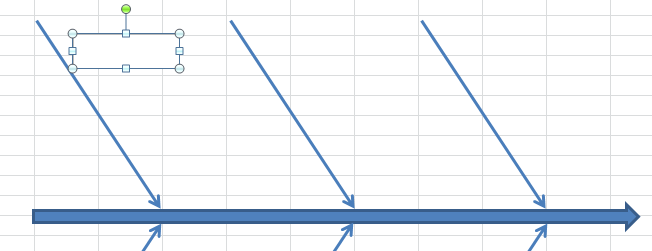
You can format the content inside the textbox going to Home option as you normally format the content.
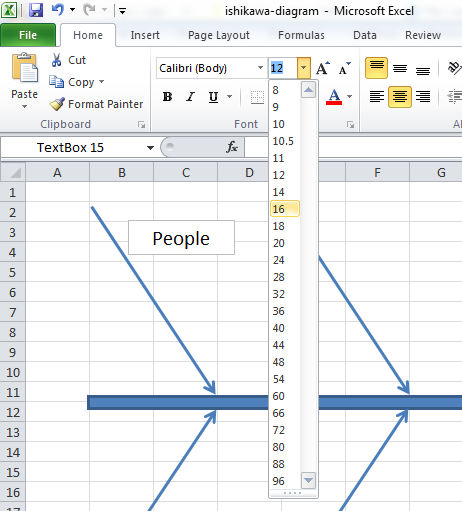
You can format the appearance of the textbox as you want by selecting the textbox and going to Format menu option.
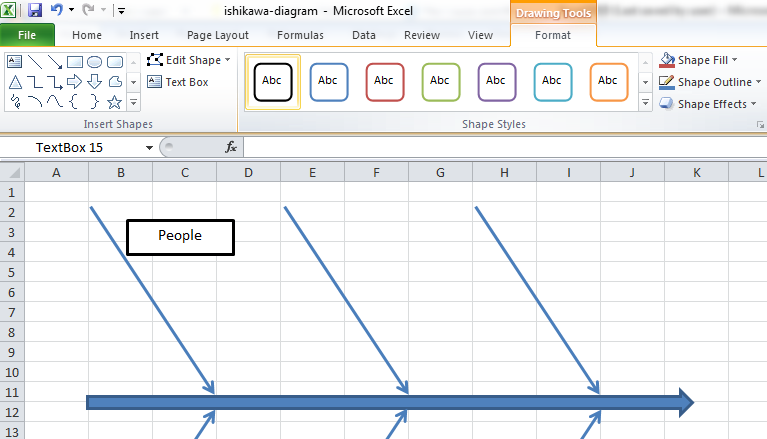
Step 7. Copy and paste as many text boxes as you want. Put them in the right positions with the right descriptions. Also add a textbox at the end of the main arrow and provide a description that explains the actual problem that is being analyzed.
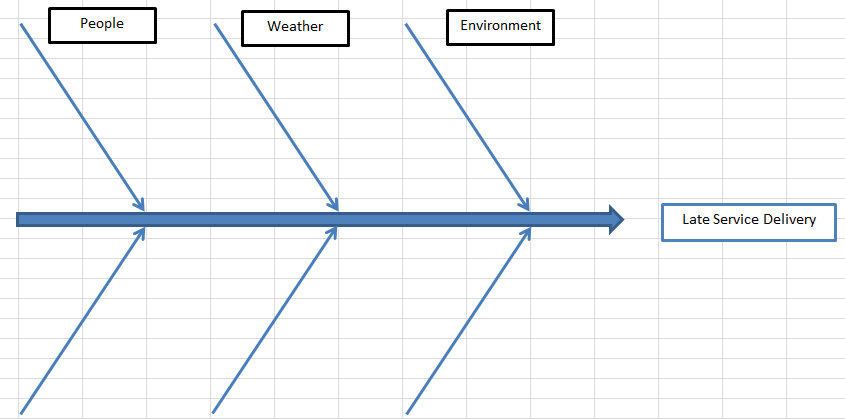
Step 8. Repeat from step 2 to add more spikes pointing to each of the single arrows. Format and properly place them with appropriate text descriptions.
Your final ishikawa diagram will be structured as follows. Of course there will be differences in size, color, position, text descriptions, number of spikes etc. The basic structure will be the same.
After drawing the Ishikawa diagram, you need to analyze it and draw conclusions. After the analysis, our task will be to identify the most important causes of the problem.
Actions must be taken as soon as possible to eliminate them according to priorities from most important to least important. During the discussion, a hierarchy of occurring causes can be defined, which is defined as:
- based on the views of the diagramming engineers,
- based on the figures,
- by assigning each potential cause a probability of occurrence.
This makes it possible to identify the critical causes that have the strongest impact on the result. Removing the root causes found can initiate the process of implementing corrective actions for potential threats.



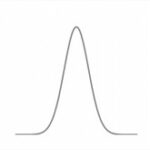
bbv
I am also visiting this website on a regular basis, this web page is in fact nice.